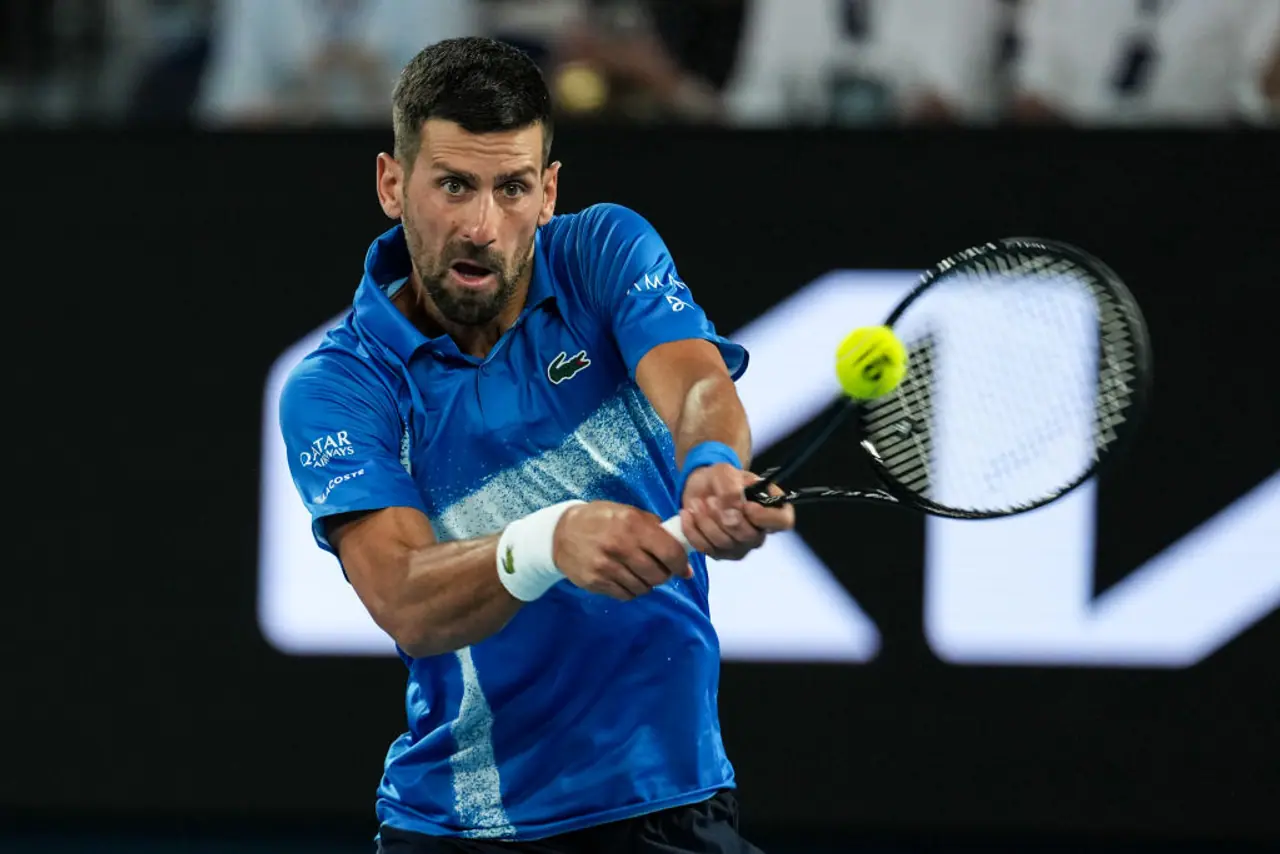- Home
- Sports
- Spin revolution at Australian Open 2025: How Djokovic, Alcaraz & more are mastering physics to dominate game
Spin revolution at Australian Open 2025: How Djokovic, Alcaraz & more are mastering physics to dominate game
Players at the Australian Open 2025 are leveraging the physics of spin to revolutionize modern tennis, making the game faster, more precise, and strategically dynamic.

Image Credit: Getty Images
The 2025 Australian Open has once again showcased the evolving mastery of spin in modern tennis, with stars like Novak Djokovic, Iga Swiatek, and Coco Gauff using the technique to mesmerize opponents and thrill fans. Spin, an integral element of the modern game, has transformed tennis into a faster, more dynamic sport, with players leveraging its physics to gain the upper hand.

Image Credit: Getty Images
At the heart of spin lies the Magnus effect, a phenomenon that makes the ball curve mid-air or bounce unpredictably. This force, named after German physicist Heinrich Gustav Magnus, explains how air pressure differences around a spinning ball alter its trajectory. Top players exploit this effect to create incredible angles and pace, making spin a formidable weapon on the court.
Image Credit: Getty Images
The Power of Topspin
Topspin has emerged as a lethal asset for players like Rafael Nadal, whose signature forehands once registered spins exceeding 50 rotations per second. This forward spin allows the ball to dip rapidly into the court, enabling players to hit with high speed while maintaining precision.
“Topspin is what keeps the ball in play despite its velocity,” explains tennis analyst Marcus Holden. “It also gives the ball a higher bounce, leaving opponents scrambling to adjust their returns.”
Image Credit: Getty Images
Backspin: The Gentle Assassin
In contrast, backspin—achieved by slicing under the ball—keeps the ball low and slows its pace, often forcing opponents into defensive positions. The backspin can also be devastating in drop shots, a technique perfected by players like Carlos Alcaraz.
“The drop shot is all about finesse,” Holden adds. “With enough backspin, the ball barely clears the net and dies on impact, giving the opponent little time to respond.”
Image Credit: Getty Images
A Physics-Driven Game
Spin is also central to serving tactics, with sidespin used to angle serves away from opponents, creating openings for winners. These strategies reflect how deeply tennis has embraced the science of spin, using it to dominate rallies and dictate play.
Fans watching this year’s Australian Open are encouraged to observe how players wield spin to control the court, whether through heavy forehands, slicing serves, or delicate drop shots. With spin, tennis is not just a game of skill but a masterclass in physics, making it more spectacular than ever.
Image Credit: Getty Images
Spin in Focus
As the tournament progresses, expect more players to exploit the nuances of spin to outwit their rivals. From the dramatic dips of topspin to the crafty floats of backspin, the physics behind tennis will remain as captivating as the sport itself.
Stay on top of all the latest Sports News, including Cricket News, Football News, WWE News, and updates from Other Sports around the world. Get live scores, match highlights, player stats, and expert analysis of every major tournament. Download the Asianet News Official App from the Android Play Store and iPhone App Store to never miss a sporting moment and stay connected to the action anytime, anywhere.